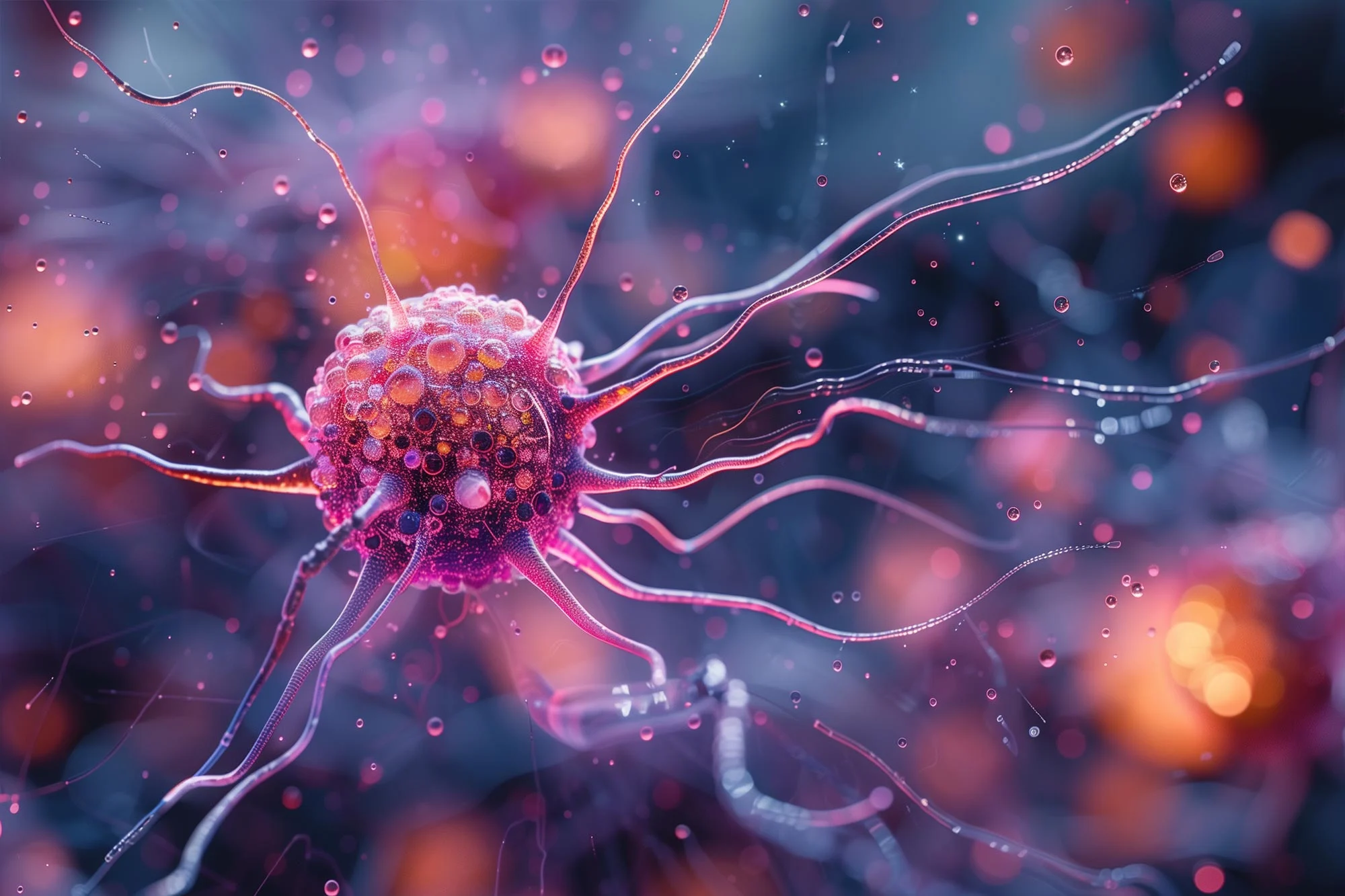Scientists Uncover How Cancer Exploits Nerve Signals to Accelerate Growth
Introduction: A New Discovery in Cancer Research
Recent groundbreaking research has uncovered a surprising method by which stomach cancer accelerates its growth: it forms electrical circuits with nearby sensory nerves. These circuits create malignant pathways that stimulate the cancer’s expansion and spread. This discovery, the first of its kind outside the brain, suggests that other forms of cancer may similarly hijack nerve signals to promote their progression.
Electrical Communication Between Cancer and Nerves: A New Mechanism
Researchers have revealed that stomach cancer uses electrical connections with sensory nerves to fuel its growth. Timothy Wang, a professor at Columbia University Vagelos College of Physicians and Surgeons and leader of the study, explains that this direct electrical communication between nerves and cancer cells could open new avenues for cancer treatment. Wang, a key figure in cancer neuroscience, emphasizes that this discovery might lead to repurposing neurological drugs for cancer therapy.
“We’ve long known that many cancers exploit nearby neurons for growth, but this new finding of direct electrical communication—especially outside the brain—marks a major shift in understanding cancer biology,” Wang says. This revelation suggests that cancers could use electrical signals to stimulate their own growth and spread, bypassing traditional growth factors and indirect mechanisms.
The Role of the Nervous System in Cancer Development
The discovery that cancer cells can form electrical circuits with sensory neurons shows that tumors have found an efficient way to stimulate their growth. “The nervous system works faster than other cells in the tumor microenvironment, allowing tumors to remodel their surroundings quickly to support their growth,” says Wang.
In recent decades, researchers have primarily focused on the immune cells, connective tissue, and blood vessels in the tumor microenvironment. However, this new insight into the role of nerves suggests that they might be just as crucial, if not more so, in cancer progression. “The nervous system provides a much quicker way for tumors to communicate and adapt, facilitating their survival and expansion,” Wang adds.
How Cancer and Neurons Interact: A Closer Look at the Connection
As a gastroenterologist, Wang’s research has focused on gastrointestinal cancers, particularly stomach cancer. About a decade ago, he discovered that cutting the vagus nerve in mice with stomach cancer significantly slowed tumor growth and improved survival rates. In this study, the team focused on sensory neurons, which responded most strongly to the presence of cancer.
The cancer cells released a protein called Nerve Growth Factor (NGF), which attracted sensory neurons to extend into the tumors. This connection triggered the neurons to release a peptide called Calcitonin Gene-Related Peptide (CGRP), which induced electrical signals in the tumor. While the team’s electron micrographs were not entirely clear, they confirmed that an electrical circuit was formed between the cancer cells and neurons.
“We observed that the cancer and neurons create an electric circuit that stimulates the tumor to grow and spread,” says Wang. “It’s not as fast as a typical nerve-muscle synapse, but it’s still a powerful electrical response.”
Electrical Circuits in Cancer: A Feedback Loop
Using advanced imaging techniques, the researchers were able to observe the electrical activity within these circuits. The activity followed a loop: it started from the tumor, traveled to the brain, and then returned to the tumor, continuously promoting the cancer’s growth. Wang describes this as a “feed-forward loop,” which continually stimulates the cancer, making it more aggressive.
Migraine Drugs: A New Hope in Cancer Treatment?
In a remarkable twist, Wang’s research suggests that drugs used to treat migraines could help disrupt these electrical circuits. CGRP inhibitors, which block the peptide CGRP that is involved in nerve signaling, were shown to reduce tumor size and improve survival rates in mice with stomach cancer. Wang’s team believes that similar treatments could potentially be applied to human patients as well.
“Based on our analysis of human stomach cancer data, we believe the circuits we found in mice are also present in humans,” Wang explains. Targeting these circuits with CGRP inhibitors could be an additional therapy to combat stomach cancer, opening up new avenues for treatment.
Beyond Direct Connections: Indirect Pathways of Nerve Involvement in Cancer
Wang’s team also suggests that sensory neurons may contribute to cancer progression through indirect pathways. Preliminary findings indicate that neurons may influence cancer growth by interacting with other cells in the tumor microenvironment, such as connective tissue cells. This indirect pathway could involve immune system manipulation, where sensory nerves potentially contribute to T-cell exhaustion, reducing the body’s ability to fight cancer.
Conclusion: The Underestimated Role of Nerves in Tumor Growth
Wang emphasizes that nerves are often overlooked as regulators of cancer growth. “Just as nerves guide the formation of organs during development, they are now proving to be key players in driving tumor growth,” he says. This discovery opens up exciting possibilities for future cancer treatments, with neurological therapies now being considered as potential options for combating cancer’s deadly progression.
